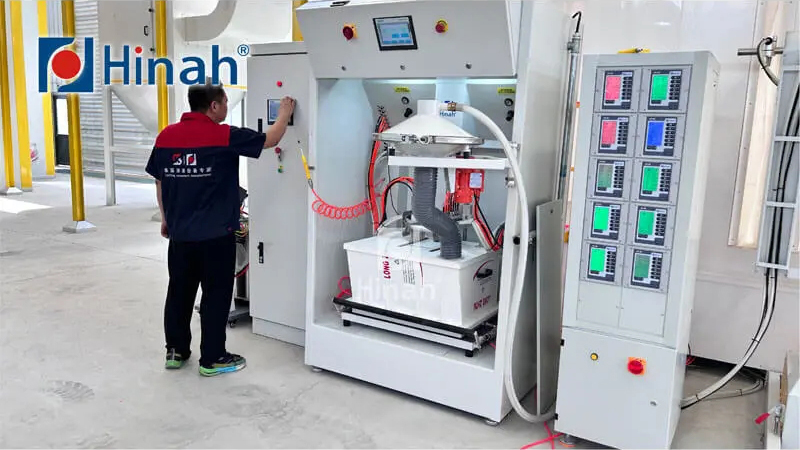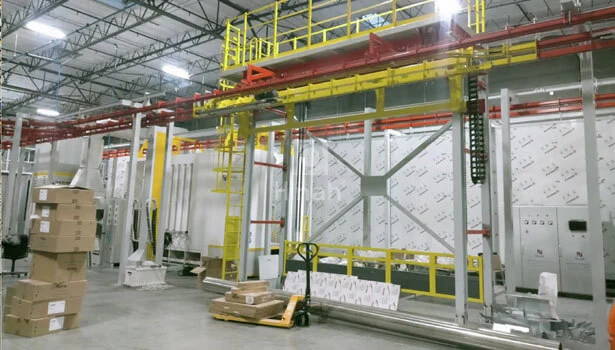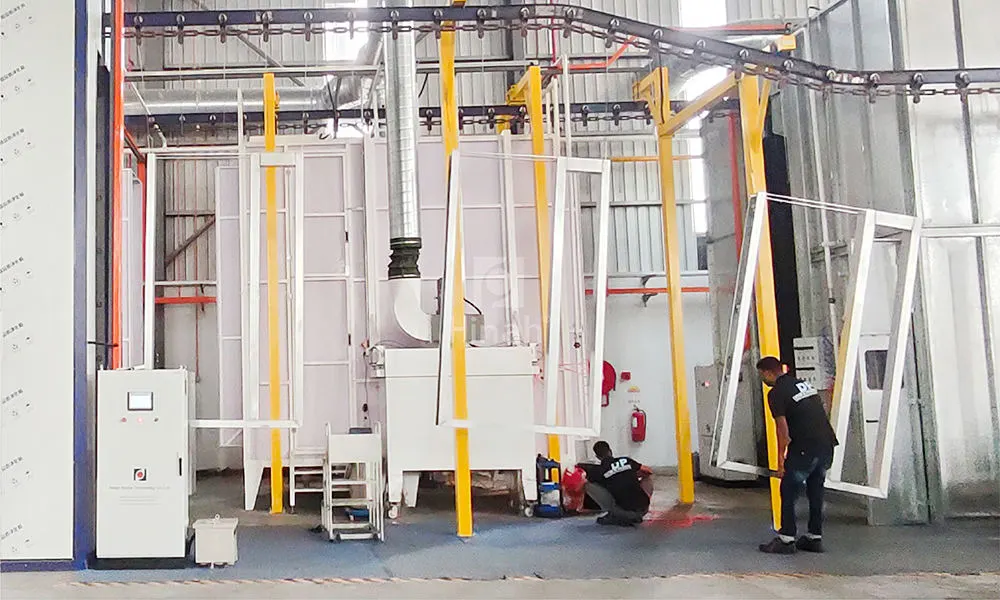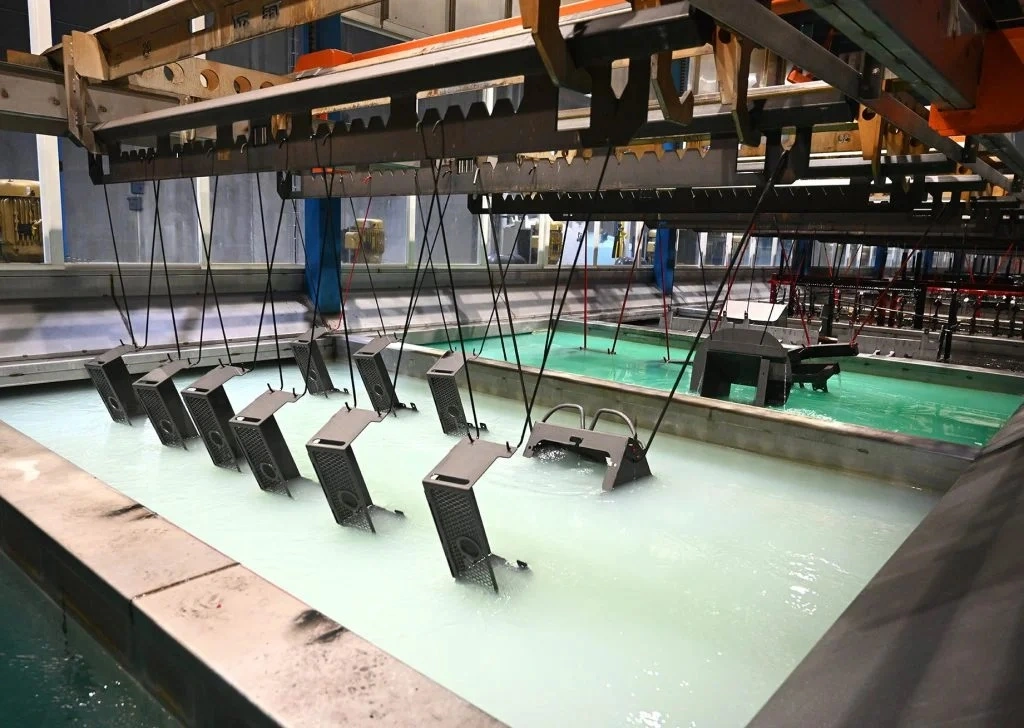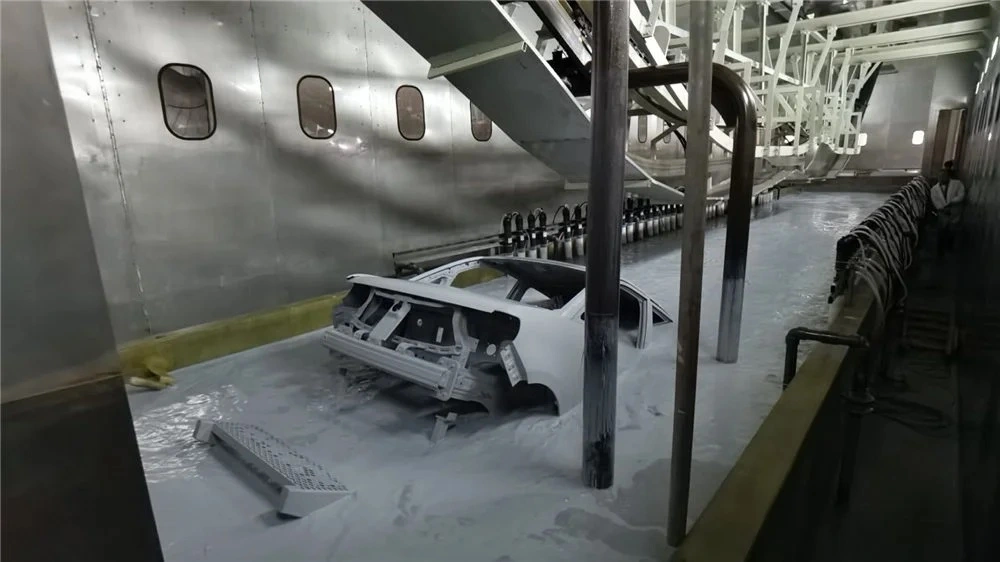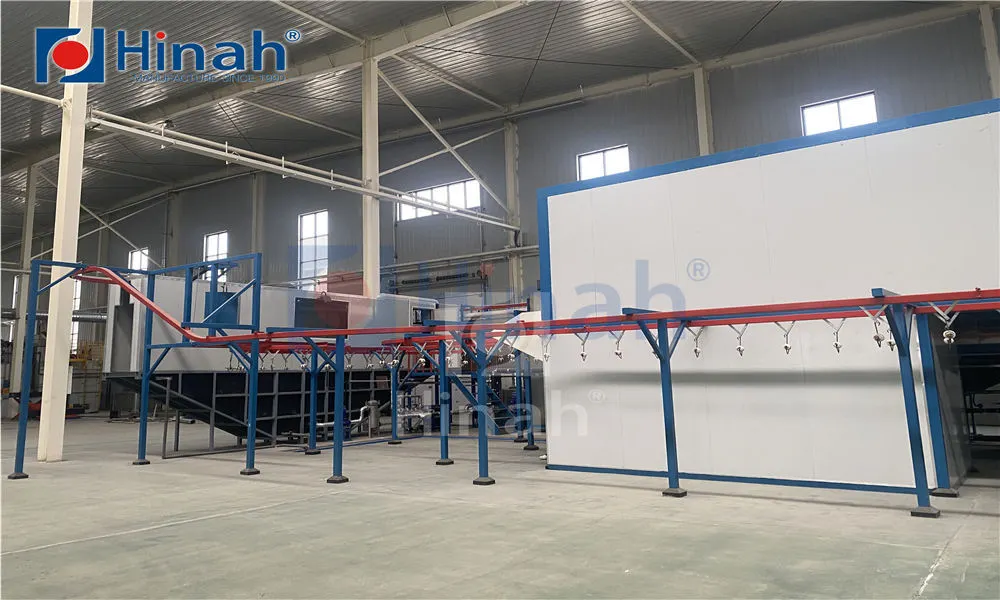Setting up a powder coating plant is a strategic investment that can significantly enhance manufacturing capabilities, improve product durability, and support sustainable operations. Powder coating involves applying a dry, electrostatically charged powder to surfaces, which is then cured under heat to form a protective, decorative layer. Unlike traditional liquid painting, powder coating offers superior efficiency, reduced environmental impact, and excellent finish quality. However, a successful powder coating plant setup requires meticulous planning across multiple dimensions, from equipment selection to regulatory compliance. This article delves into the essential aspects of establishing a powder coating facility, providing actionable insights for entrepreneurs, manufacturers, and industry professionals. By focusing on these core components, you can optimize your powder coating plant setup for long-term profitability and operational excellence.
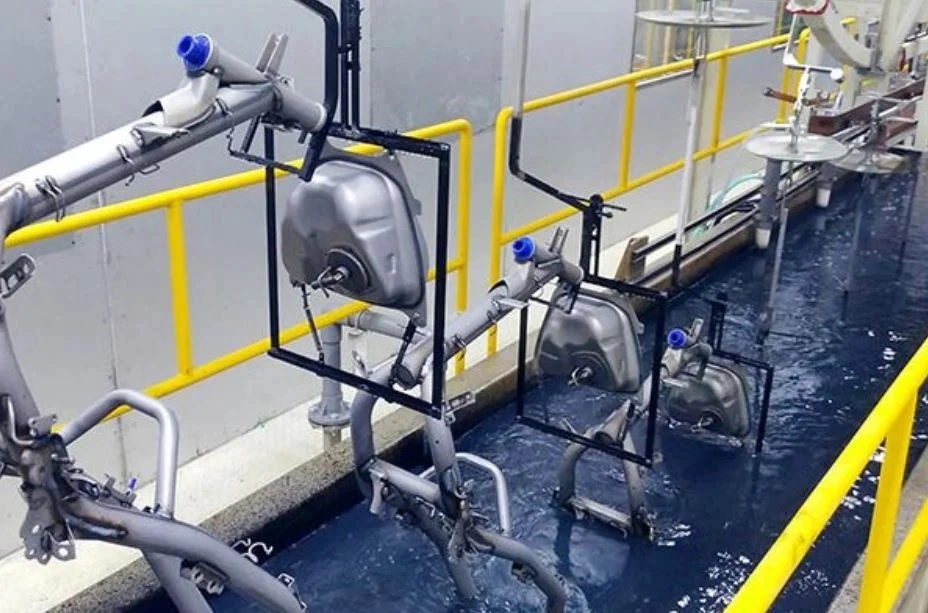
Site Selection and Facility Layout for Powder Coating Plant Setup
The foundation of any powder coating plant setup begins with choosing an appropriate location and designing an efficient facility layout. Site selection impacts operational costs, logistics, and scalability. Ideally, the site should be in an industrial zone with easy access to transportation networks for raw material supply and product distribution. Consider proximity to target markets and availability of utilities like electricity, water, and gas, as powder coating processes require substantial energy inputs. Additionally, local regulations regarding emissions and waste disposal must be evaluated to avoid compliance issues.
The facility layout is equally critical in a powder coating plant setup. A well-designed layout minimizes material handling, reduces contamination risks, and enhances workflow efficiency. Key zones include the pre-treatment area, application booth, curing oven, and finishing section. For instance, the pre-treatment area should be isolated to prevent cross-contamination, while the curing oven needs proper insulation and ventilation. Space allocation for storage, quality control, and employee amenities is also vital. By optimizing the layout, you can streamline the powder coating process, reduce downtime, and ensure a safe working environment. Investing in modular designs can facilitate future expansions, making your powder coating plant setup adaptable to evolving industry demands.
Essential Equipment for Powder Coating Plant Setup
Selecting the right equipment is a cornerstone of an effective powder coating plant setup. The core machinery includes pre-treatment systems, powder application tools, curing ovens, and recovery systems. Pre-treatment equipment, such as wash stations and chemical tanks, prepares surfaces by removing oils, rust, and contaminants, ensuring optimal adhesion. Automated spray booths with electrostatic guns are used for powder application, offering uniform coverage and minimal waste. High-efficiency curing ovens, which operate at temperatures between 150°C to 200°C, fuse the powder into a durable finish.
Moreover, a comprehensive powder coating plant setup incorporates ancillary equipment like powder recovery systems (e.g., cyclone or cartridge filters) to reclaim overspray, reducing material costs by up to 95%. Compressed air systems, conveyor belts for material handling, and environmental controls are also integral. When sourcing equipment, prioritize energy-efficient models to lower operational expenses and align with sustainability goals. For example, infrared curing ovens can reduce energy consumption compared to conventional convection ovens. Collaborating with reputable suppliers and conducting pilot tests can help tailor the equipment to your specific needs, ensuring a robust powder coating plant setup that delivers consistent quality and high throughput.
Ventilation and Safety Systems in Powder Coating Plant Setup
Safety is paramount in any powder coating plant setup, given the involvement of fine powders, high temperatures, and electrical systems. Proper ventilation and safety protocols protect workers, prevent explosions, and ensure regulatory compliance. Ventilation systems, including exhaust fans and ductwork, are essential to remove airborne particles and fumes from the application and curing areas. This minimizes health risks like respiratory issues and reduces the likelihood of powder accumulation, which could lead to combustible dust hazards.
In addition to ventilation, a safe powder coating plant setup incorporates explosion-proof equipment, fire suppression systems, and personal protective equipment (PPE) for employees. Grounding mechanisms are crucial to dissipate electrostatic charges during powder application, preventing sparks. Regular maintenance schedules for ovens and electrical systems further mitigate risks. Training programs on hazard awareness and emergency procedures should be mandatory. By integrating these safety measures, you not only safeguard personnel but also enhance operational continuity. A proactive approach to safety in your powder coating plant setup can reduce insurance premiums and build a reputation for reliability in the industry.
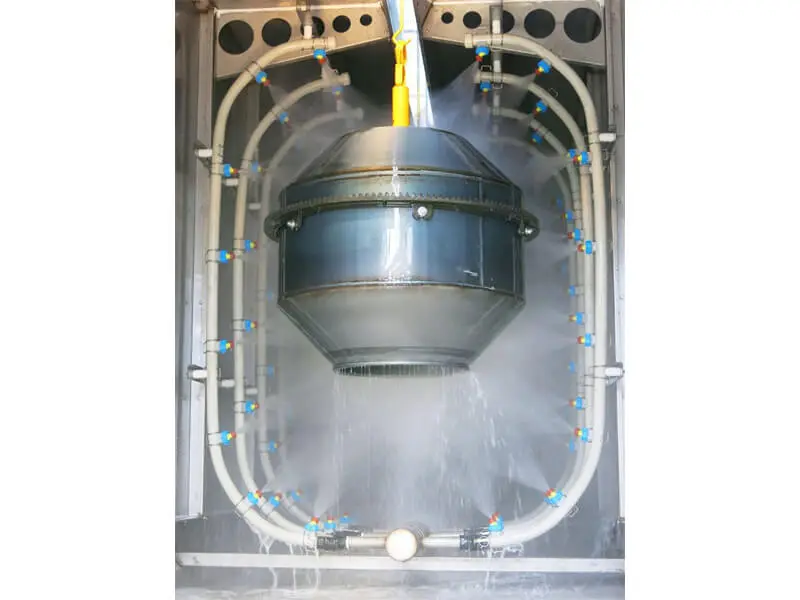
Cost Analysis and Financial Planning for Powder Coating Plant Setup
A thorough cost analysis is indispensable for a viable powder coating plant setup. Initial investments encompass land acquisition, construction, equipment procurement, and installation. On average, a small to medium-scale powder coating plant setup can cost between $50,000 and $500,000, depending on capacity and automation levels. Equipment alone may account for 40-60% of the total expense, with curing ovens and spray booths being significant cost drivers. Operational costs, including labor, utilities, powder materials, and maintenance, must also be projected.
Financial planning should include break-even analysis, cash flow management, and return on investment (ROI) calculations. For instance, a powder coating plant setup with high recovery rates can achieve ROI within 2-3 years by minimizing material waste and increasing throughput. Exploring financing options, such as loans or leasing agreements, can ease capital expenditure. Additionally, consider hidden costs like regulatory fees, training, and technology upgrades. By developing a detailed budget and contingency plan, you can navigate financial challenges and ensure your powder coating plant setup remains economically sustainable. Leveraging industry benchmarks and consulting with financial experts can provide valuable insights for optimizing expenditures.
Environmental Compliance and Sustainability in Powder Coating Plant Setup
Environmental compliance is a critical aspect of a modern powder coating plant setup, as regulations govern emissions, waste disposal, and resource usage. Powder coating is inherently eco-friendlier than solvent-based paints due to negligible volatile organic compound (VOC) emissions. However, compliance with standards like the EPA in the U.S. or REACH in Europe is mandatory. This involves monitoring air quality, managing chemical waste from pre-treatment, and implementing spill prevention plans.
To enhance sustainability, a powder coating plant setup can adopt green practices such as using recycled powders, installing energy-efficient ovens, and integrating water recycling systems in pre-treatment. Solar panels or other renewable energy sources can further reduce the carbon footprint. Regular audits and certifications, like ISO 14001, demonstrate commitment to environmental stewardship. By prioritizing eco-friendly measures, your powder coating plant setup not only avoids legal penalties but also appeals to environmentally conscious clients. This strategic focus can open doors to new markets and partnerships, reinforcing the long-term viability of your operation.
Operational Best Practices for Powder Coating Plant Setup
Once established, maintaining efficient operations is key to the success of a powder coating plant setup. Best practices include standardized operating procedures (SOPs) for each stage, from surface preparation to curing. For example, consistent pre-treatment ensures proper adhesion, while controlled curing times prevent defects like orange peel or bubbling. Quality control checks, using tools like thickness gauges and adhesion testers, help maintain finish integrity.
Employee training is another vital component; skilled operators can optimize powder usage and reduce rework rates. Implementing lean manufacturing principles, such as 5S methodology, can minimize waste and improve productivity. Additionally, predictive maintenance schedules for equipment prevent unexpected breakdowns. By fostering a culture of continuous improvement, your powder coating plant setup can achieve higher efficiency and customer satisfaction. Tracking key performance indicators (KPIs), such as first-pass yield and throughput, enables data-driven decisions for ongoing optimization.
Marketing and Business Development for Powder Coating Plant Setup
A well-executed powder coating plant setup must be complemented by effective marketing and business development strategies to attract clients and generate revenue. Identify target industries, such as automotive, aerospace, or furniture, and tailor services to their specific needs. Building a strong online presence through a professional website and social media can showcase your capabilities, including case studies and certifications.
Networking at trade shows and collaborating with local manufacturers can generate leads. Offering value-added services, like custom color matching or rapid turnaround times, differentiates your powder coating plant setup from competitors. Additionally, collecting customer feedback and adapting to market trends ensures relevance. By aligning marketing efforts with operational strengths, you can build a reputable brand and secure a steady stream of projects, driving growth for your powder coating plant setup.
Frequently Asked Questions (FAQs)
Q1: What is the typical lead time for a powder coating plant setup?
A1: The lead time for a powder coating plant setup varies based on scale and complexity, but it generally ranges from 3 to 12 months. This includes planning, procurement, installation, and testing phases. Factors like custom equipment orders and regulatory approvals can extend the timeline.
Q2: How much space is required for a small-scale powder coating plant setup?
A2: A small-scale powder coating plant setup typically requires 1,000 to 2,000 square feet of space. This allows for essential zones like pre-treatment, application, curing, and storage. However, the exact area depends on the equipment size and workflow design.
Q3: Can a powder coating plant setup be automated?
A3: Yes, automation is common in powder coating plant setups, especially for high-volume operations. Automated conveyors, robotic spray guns, and integrated control systems can enhance precision, reduce labor costs, and improve safety. Semi-automated options are also available for smaller facilities.
Q4: What are the common challenges in a powder coating plant setup?
A4: Common challenges include managing initial costs, ensuring regulatory compliance, and maintaining consistent quality. Other issues may involve powder contamination, equipment maintenance, and training staff. Proper planning and expert consultation can mitigate these risks.
Q5: How does a powder coating plant setup compare to liquid painting in terms of cost?
A5: A powder coating plant setup often has higher initial costs due to specialized equipment, but it offers lower long-term expenses. Powder coating reduces material waste, eliminates solvents, and requires less energy for curing, leading to better ROI over time compared to liquid painting.
In conclusion, a successful powder coating plant setup hinges on a holistic approach that balances technical, financial, and environmental factors. By addressing these key components, you can build a facility that meets industry standards and drives business growth.


